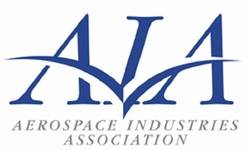Tue, Jul 27, 2010
AIA And ASD Reaffirm Trans-Atlantic Industry Cooperation In
Wide-Ranging Discussions
 Industry leaders from the Aerospace and Defence Industries
Association of Europe (ASD) and the Aerospace Industries
Association of America (AIA) exchanged views on how to expand their
close collaboration in a wide variety of areas during a meeting at
the Farnborough International Airshow Tuesday morning.
Industry leaders from the Aerospace and Defence Industries
Association of Europe (ASD) and the Aerospace Industries
Association of America (AIA) exchanged views on how to expand their
close collaboration in a wide variety of areas during a meeting at
the Farnborough International Airshow Tuesday morning.
CEOs of some of the largest and most influential aerospace
companies on both sides of the Atlantic discussed ongoing efforts
among manufacturers, operators and national aviation authorities to
come up with an international standard for operations near volcanic
ash. CEOs affirmed support for continued research and testing of
volcanic ash effects. However, until real-time, calibrated ash
detection systems are aboard aircraft, manufacturers continue to
recommend avoidance of visible ash.
Concerning air traffic management systems, CEOs agreed that a
commitment to interoperability between the future European and U.S.
systems, SESAR and NextGen respectively, should be made as early as
possible via collaboration between industry and aviation
authorities on both sides of the Atlantic. To that end, CEOs
concurred that industry and regulators should engage proactively in
a coordinated effort to ensure ATM technology harmonization.
 Additional topics discussed during the dialogue included export
control modernization in the United States and Europe, mitigating
the environmental impact of aviation and expanding industry
commitment to ethical business practices.
Additional topics discussed during the dialogue included export
control modernization in the United States and Europe, mitigating
the environmental impact of aviation and expanding industry
commitment to ethical business practices.
“This meeting was extremely productive, and we have set a
clear course of action to meet these very important
challenges,” Scott Donnelly, Chairman of the Board of
Governors, AIA and President & CEO of Textron said. “We
look forward to even closer cooperation with our European partners
on these issues in the future.”
Pier Francesco Guarguaglini, President of ASD and Chairman &
CEO of Finmeccanica, agreed. “Transatlantic cooperation is
essential to tackle environmental and technological challenges that
are common to the US and the European aerospace industries,”
he said.
More News
Airplane Bounced About 3 Ft Then Touched Back Down And Then, With No Brakes Applied, The Airplane Began Veering To The Left Analysis: The pilot entered the airport traffic pattern >[...]
Aero Linx: British Microlight Aircraft Association (BMAA) The primary focus within all aviation activity is SAFETY. In all aspects of our sport SAFETY must come first, whether it b>[...]
From SnF25 (YouTube Edition): William Wynne Builds Practical Aircraft Engines on the Corvair Platform Seeking an affordable alternative to the traditional aircraft engine options, >[...]
How To Get A Story On Aero-TV News/Feature Programming How do I submit a story idea or lead to Aero-TV? If you would like to submit a story idea or lead, please contact Jim Campbel>[...]
From 2023 (YouTube Edition): Bridge of CiES CiES Inc. is a Bend, Oregon-based designer and manufacturer of modular embedded aircraft systems and sensors. The company’s fuel-l>[...]
 NTSB Final Report: Aviat A1
NTSB Final Report: Aviat A1 ANN's Daily Aero-Linx (07.08.25)
ANN's Daily Aero-Linx (07.08.25) Classic Aero-TV: Fly Corvairs Reliable Engine Alternative
Classic Aero-TV: Fly Corvairs Reliable Engine Alternative ANN FAQ: Contributing To Aero-TV
ANN FAQ: Contributing To Aero-TV Classic Aero-TV: CiES Fuel-Quantity and e-Throttle Systems Praised
Classic Aero-TV: CiES Fuel-Quantity and e-Throttle Systems Praised




